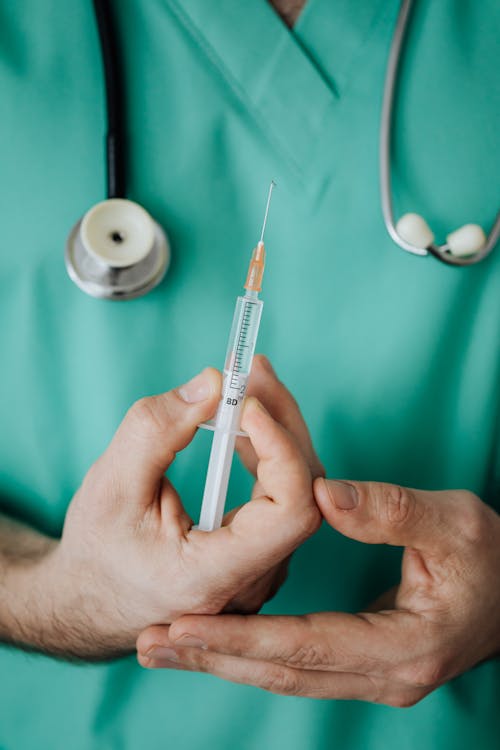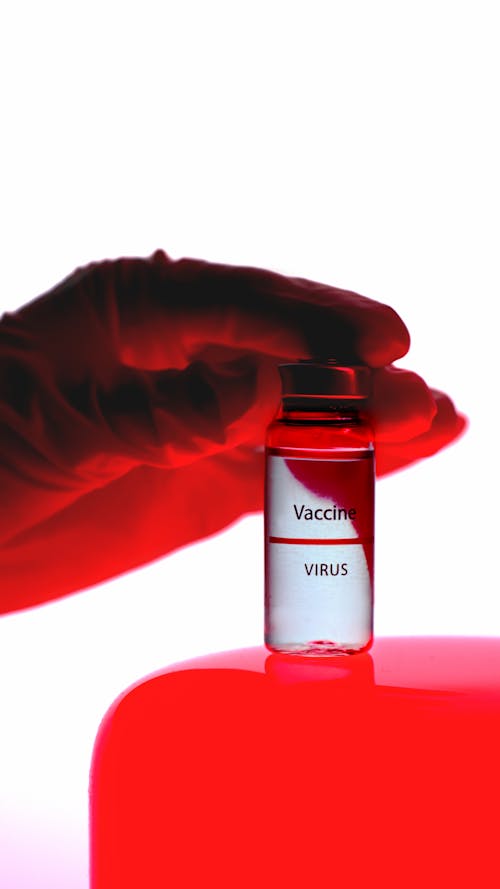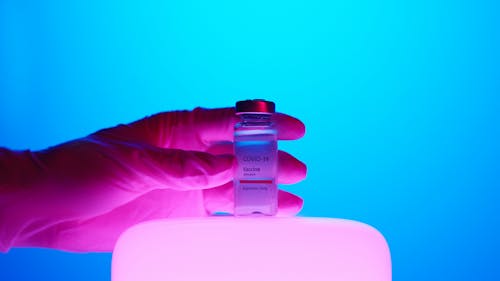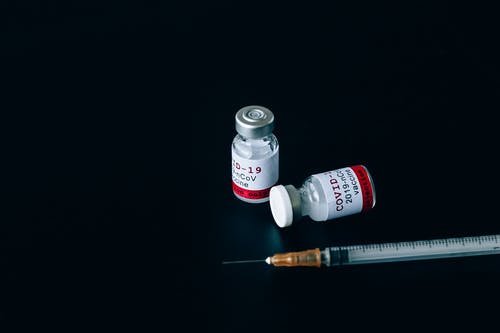The terms’ vaccination’ and ‘vaccine’ are derived from Variolae vaccinae (Cow smallpox). These terms were given by Edward Jenner (who both developed the concept and created the first vaccine) to denote cowpox. In 1881, to honor Jenner, Louis Pasteur proposed that these terms should cover the inoculations of other types of disease-causing pathogens that were then being developed.

Chemically, a vaccine is any biological preparation that promotes an active acquired immune reaction to a pathogenic infection/disease in the human body.
What is a vaccine?
In simple words, a vaccine can be explained as an external agent that essentially contains a biological substance. This resembles the disease-causing pathogen. The biological agent used is a weakened/killed/fragmented/broken-down form of the infection-causing pathogen to ensure that the vaccine is not harmful. The vaccine’s antigenic property is based on the human body to recognize this fragment of the pathogen (surface proteins, toxins, chemicals, cell wall, etc.). Once encountered by the immune cells of the biological system, this external agent is considered a threat, and thus, the body works to cause its destruction. Several different types of immune cells take part in this reaction. Additionally, our body’s immune cells (memory B cells) tend to recognize any related microorganisms associated with the agent present in the vaccine. As a result, if the body encounters any threat in the future by any related organism, the infections are countered.
The use of the vaccine has been the healthcare industry’s highlights in the present times. These biologics can make the human body fight off infections independently and become important in treatment courses. The process of administration is referred to as vaccination. Since the discovery, widespread immunization of people against different infections has resulted in restriction and eradication of infections. Smallpox has been completely eradicated, while polio, tetanus, and measles have been greatly controlled. Depending upon the use, it can be used as a prophylactic (management of infection) or as a therapeutic entity to cure a disease that has already occurred. World Health Organization (WHO) has reported that licensed vaccines are presently available to the world for more than twenty different infections. Vaccines developed for other diseases include influenza, HPV, chickenpox, tuberculosis, mumps, and rubella.
Mechanism: How does it work?

The high degree of safety and efficacy over a large population helps fight off infections in a widespread manner.
The biological immune system has cells that act to destroy the external agent present in the vaccine and remember this agent’s strain and characteristics. The immune system recognizes vaccine agents as foreign, destroys them, and “remembers” them. When the body encounters a pathogenic version of an agent, it recognizes the protein coat on the virus previously present in the vaccine and thus is prepared to respond. Initially, the immunological cells try to neutralize the target agent before entering to infect cells, and further by recognizing and destroying infected cells before that agent can multiply to vast numbers.
With all the therapeutic success of these vaccines, some lacunae limit their effectiveness in eliciting the immune response. There have been reported cases of failure. This failure for protection might result from vaccine-related failures such as fault and ineffectiveness in attenuation, vaccination regimes, or administration or host-related failure. The host-related failure could be due to the host’s non-responsive immune system. Research has also suggested the influence of predisposing factors, including genetics, age, health, immunity, and nutrition. If a person receiving vaccination has some genetic anomaly, it could fail if the body fails to make the memory B cells to make antibodies. Factors including age and health status, signify a general perspective towards an individual’s immunity. Older people are found to have a weakened immune system and overall health status.
Additionally, there are cases when people develop the antibody to fight off the infection. However, the degree of protection (i.e., number of antibodies) is inadequate, or the immunity develops too slowly to elicit the required response. There may also be a possibility that the immune system fails to kill the pathogen completely, or there are possibilities of a different mutant strain of the pathogen. Thus, there are some minor inconsistencies, but an inadequate response may curb the infection. This will result in a lower mortality rate by that disease.

To manage vaccines’ efficiency for the older population, adjuvants are added. These adjuvants have an additional immune reaction, thereby boosting the immunity against the pathogen.
Factors under consideration
Conclusively, the performance of vaccines is influenced by multiple factors, including –
- Disease condition
- The strain of the pathogen
- The specificity to a limited strain
- Scheduling and booster doses
- Idiosyncratic, unknown reactions
- A novel breakthrough infection
- Proper epidemiological study of the pathogen and virulence
Types of Vaccines
There are different types based on the type of agent used.
With recent research developments, there has been a novel understanding of using the pathogen’s genetic makeup to develop a vaccine. Different types are –
- Live, attenuated vaccine – these contain a living, weakened version of the disease-causing pathogen. The weakened microbe cannot cause a flow blown infection. These are the closest to natural infections.
E.g., measles, mumps, the chickenpox vaccine.
- Inactivated vaccines – these result from killing the disease-causing pathogen by chemical methods (radiation, heat, or chemicals). Since the pathogen is killed, there is no possibility of mutation of organisms into a disease-causing state. These are, therefore, very efficacious, safe, and stable.
E.g., influenza, polio, rabies, hepatitis A vaccine.
- Subunit vaccine – consist of specific antigens of a pathogen that are most potent in activating a high degree of immune reaction. The subunit vaccine only contains the essential antigens and not the other molecules making up the microbe.
E.g., Immunization of Plague
- Toxoid vaccine – toxins are harmful chemicals secreted by the pathogens. The vaccines of toxoid origin are used against an illness caused due to such endotoxins and exotoxins. Research has presented that toxins can be inactivated using formalin. The inactivated toxins are called ‘toxoids’ and are safe.
E.g., Crotalus atrox toxoid vaccine
- Conjugate vaccines – polysaccharides (complex structures of the bacterial cell wall) can mimic the bacterial antigen and can be isolated to be used as a vaccine. The scientists try to make a conjugate vaccine for it. Such a product is called a conjugate vaccine.
E.g., Haemophilus influenzae type B vaccine.
- DNA/RNA vaccines – vaccines consisting of genetic material as the antigen has been a recent development. This holds great promise for a majority of viral diseases. The development requires a high degree of precision such that it does not alter the host genome and show an unintended immune response.
E.g., mRNA vaccine for SARS-CoV-2.
- Recombinant vector vaccines: A vector refers to the virus or the bacterium used as a carrier of any pathogen’s genetic material. These vaccines have recently developed that function on the same lines as the DNA/RNA vaccine. The antigenic genetic material is added to the recombinant plasmid vector and introduced to the vaccine’s immune system.
E.g., DPT vaccine
Vaccine development: How are they developed?

It takes about 12-15 to develop and distribute any vaccine to the public as per an estimate. However, as an exception to the COVID-19 pandemic, the development is rapid as a shunt pathway is used. The tests for safety and efficacy as a part of a clinical trial typically covers a period of 10 years. The COVID vaccine development has been modified, and safety and efficacy estimates have not been studied in great detail. However, they are quite accurately predicted. Upon authorization, drug regulatory scaling up off vaccine manufacturing begins. To develop a fully packaged product, weakened antigens and other excipients are added for stability and transport. The flow chart below gives an idea about the development and further distribution to the public.
Manufacturing, safety, and Quality Control

The manufacturing process is carried out in a GLP certified lab and following all the GMP rules. The labs for development and manufacturing units are usually biosafety level 3 and 4 (BSL 3 & 4). This ensures proper containment and reduces infection risk to the working class.
Post manufacture, vaccines are stored in controlled temperatures to maintain efficacy. Most are stable between 2-8⁰C. Some require temperatures of -20⁰C, while the recently developed vaccine for COVID-19 requires to be kept at a temperature of -70⁰C. Thus, special storage and transport units are simultaneously being developed. Inter-country transport involves using refrigerators and iceboxes.
To maintain and ensure that people being vaccinated are safe from infection, national regulatory bodies and WHO constantly monitor the population for possible side effects and idiosyncratic reactions. Thus, the post-marketing surveillance and pharmacovigilance (regular assessments and post-approval clinical studies); are of utmost importance. Additionally, research studies are carried out to determine how long it would remain protective and effective.


Pingback: Pharma News – 16 August 2020 > PharmaCampus
Pingback: Pharma News – 20 February 2021 (Updates) > PharmaCampus
Pingback: AstraZeneca's COVID–19 vaccine > PharmaCampus
Pingback: The BioNTech/Pfizer COVID vaccines > PharmaCampus
Pingback: GMP Violation by Alembic Pharma > PharmaCampus
Pingback: Lupin and Aurobindo Pharma Recall certain medications > PharmaCampus
Pingback: USFDA approves Lupin’s Posaconazole tablets > PharmaCampus
Pingback: JCR Pharma plans to expand production > PharmaCampus
Pingback: GC Pharma supports South Korea in the COVID fight. > PharmaCampus
Pingback: Covishield: The Covid vaccine of Serum Institute of India > PharmaCampus